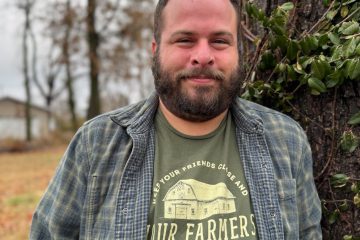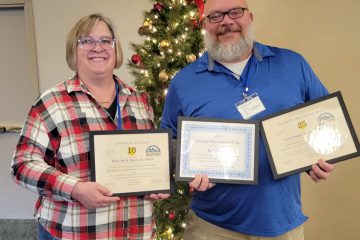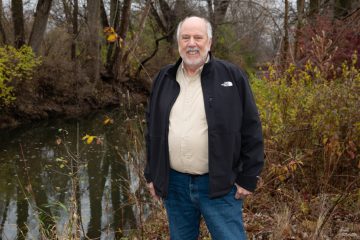 NLRS News from Around the State
NLRS News from Around the State
by Steve Fulling
My name is Steve Fulling and I live in Palestine, located in Crawford County. I am co-chair of the Association of Illinois Soil and Water Conservation Districts (AISWCD) Nutrient Loss Reduction Strategy Subcommittee, alongside Knox County Resource Conservationist Kara Downin. In conversation with the AISWCD and our own committee, we felt we could add value to the realm of conservation dialogue, and especially nutrient loss, with the creation of a monthly news article. This is the first installment of hopefully many to come.
I would like to take this opportunity to share some exciting news and happenings in the southeastern portion of the state I call home and provide you with an overview of a relatively new partnership called the Wabash Valley Stewardship Alliance (WVSA). The WVSA was formed around three years ago beginning with a comprehensive tile water study done in the counties of; Crawford, Lawrence, Richland, Edwards, Wabash, White, Wayne, Hamilton and Gallatin. The Farm Bureaus of these counties are all each conservation minded and desirous of being pro-active towards nutrient reduction, and resultantly, formed the Wabash Valley Stewardship Alliance and have since worked in partnership with several area soil and water conservation districts (SWCDs).
In August of this year I was invited to attend a meeting of the WVSA and much of the discussion centered around the new S.T.A.R. (Saving Tomorrow’s Agriculture Resources) program recently launched in central Illinois by the Champaign County Soil and Water Conservation District. In short order, the alliance members had reached consensus to engage this new program and hammered out details with the exception of one item – the need for technical assistance. I knew at this point, SWCDs could play an impactful role in this project. Since this time, four SWCD employees within the WVSA have stepped forward to serve as technical service providers, with hopes of more to join in the future.
S.T.A.R. program training opportunities are on the horizon, and the WVSA has been very open to collaborating with regional SWCDs to kickstart this program in this portion area of the state. In addition, the WVSA science committee has worked with the S.T.A.R science committee to modify the evaluation worksheet to better reflect the topography and nutrient loading concerns in southeastern Illinois, which is more phosphorous related, unlike northern counties who grapple with nitrate issues.
While I am sure you will hear more about S.T.A.R. program in the upcoming months, the purpose of this commentary is to convey to you that exciting new opportunities for partnership and programming in the advancement of conservation exist out there. I encourage you to look around in your immediate townships, counties, and watersheds for partners to link with. Many SWCDs in recent times have been proactive in seeking new partnerships to get conservation work on the ground, and I commend those counties for their dedication and proactive approach. As a final note, I encourage everyone – SWCD Directors and staff alike to redouble their commitment to the promotion and implementation of conservation. Now more than ever, SWCDs need to be the steadfast leaders that they have always been. Ask questions, seek answers, engage partners, show up and try to be a part of the solution.
Steve Fulling is a member of the Association of Illinois Soil and Water Conservation Districts’ Board of Directors. He is a lifelong resident of Crawford County, and has farmed there since graduating from college in 1987. Fulling became Chair of the CCSWCD in January of 2015 and has worked with the district periodically since 1993. He is passionate about conservation, and stewardship of the land, some of which his family has farmed for six generations, stating “When I leave this earth, it is my hope that I leave it better than I found it for future generations.”


